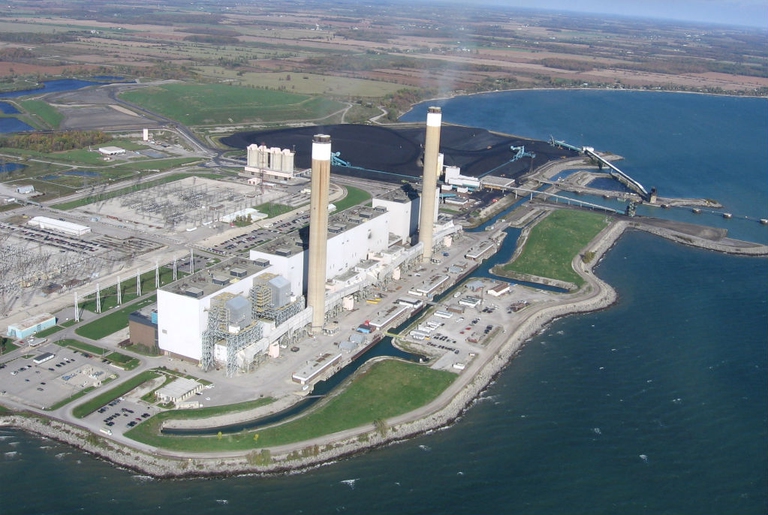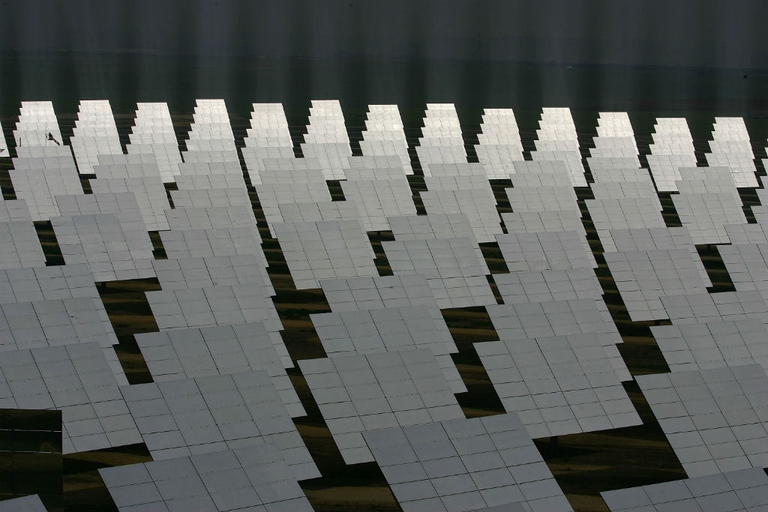
A group of experts in Tokyo suggested pouring radioactive water from Fukushima into the open sea. A marine biochemist explains the consequences of this absurd decision.
Closed in 2013, the coal plant will become a solar park that will generate 44 MW of photovoltaic, clean and reliable energy.
This project has it all: a coal plant will be transformed into a renewable energy one, substituting fossil fuels for clean power. This is what will happen to the Nanticoke Generating Station in Ontario, Canada, once considered the largest coal plant in North America.
The plant was shuttered in 2013 because it was considered obsolete and because Ontario chose to increasingly stop producing energy from coal. Now the plant will be home to a new solar park with a 44-megawatt solar installation. The panels will be installed on and near the former plant and north of Lake Erie.
The project of the solar park is developed by Sun Edison Canadian and its partners Six Nations Development Corporation and Ontario Power Generation. “The Nanticoke project is a great opportunity for Ontario to take a former coal plant and transform it into a clean and reliable solar power plant”, said Michelle Chislett, vice president of SunEdison and country manager for Canada. “This project is a great example of how countries are retiring coal plants and replacing them with clean, renewable power plants”.
“I’m excited with this opportunity”, said Jeff Lyash, CEO of the Ontario Power Generation. “We stopped burning coal at Nanticoke in December 2013, and this is an investment in a cleaner energy future for Ontario”.
The Canadian province chose to gradually shutter coal plants as part of a project of transition to a low carbon emission economy. The former Nanticoke plant was known to be the most polluting plant in Canada. The most positive figure was released after that the plant was closed: in 2005 there were 15 smog advisories covering 53 days, while in 2015 there were none.
Siamo anche su WhatsApp. Segui il canale ufficiale LifeGate per restare aggiornata, aggiornato sulle ultime notizie e sulle nostre attività.
![]()
Quest'opera è distribuita con Licenza Creative Commons Attribuzione - Non commerciale - Non opere derivate 4.0 Internazionale.
A group of experts in Tokyo suggested pouring radioactive water from Fukushima into the open sea. A marine biochemist explains the consequences of this absurd decision.
A federal court in Washington, D.C. has struck down the Dakota Access Pipeline, following years of campaigning by the Standing Rock Sioux tribe.
The Scottish island of Eigg is self-sufficient for its energy needs, relying almost entirely on renewable sources, especially thanks to a coordinated community effort.
President Magufuli in unmovable in going ahead with the Stiegler’s Gorge dam despite conservationists’ warnings of the damage it will cause the Selous Game Reserve’s ecosystem and wildlife.
A large dam along the Luangwa River in Zambia would have posed a serious risk to local people and wildlife, leading hundreds of thousands to oppose it. A call to which the government responded by halting plans to build it.
The first one megawatt solar power plant in the Chernobyl exclusion zone has become operational. This is the first step in a renewable energy development project promoted by the Ukrainian government in the area.
A tanker exploded at a gas and petrol station in Nigeria’s Nasarawa state on the 10th of September, killing 35 people and leaving some burned beyond recognition; 3 citizens had several spine and brain injuries, 2 of them are still on Intesive Care Units. Fela Habila , a local singer, is now stable and out of danger but
The largest tidal power plant in the world will be built in the Larantuka Straits. It will serve 100,000 people and help overcome some of the challenges of energy provision in Indonesia.
Robben Island’s solar energy micro-grid project will produce almost one million kilowatt hours of electricity annually, significantly reducing the cost and impact of buying diesel.









